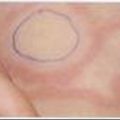14.1 The ear
Otitis externa
Prevention
Keeping the ear canal dry and avoidance of trauma to the canal are the mainstays of prevention.
Acute otitis media
Discharging otitis media – chronic suppurative otitis media
Trauma
Complications
Controversies and future directions
 Acute otitis media:
Acute otitis media:
Acuin J. Extracts from ‘concise Clinical evidence’: Chronic suppurative otitis media. Br Med J. 2002;325(7373):16.
Acuin J., Smith A., Mackenzie I. Interventions for chronic suppurative otitis media. Cochrane Database Syst Rev. 2, 2000. John Wiley & Sons, Chichester
Ah-Tye C., Paradise J.L., Colborn D.K. Otorrhea in young children after tympanostomy-tube placement for persistent middle-ear effusion: Prevalence, incidence, duration. Paediatrics. 2001;107(6):1251-1258. [comment]
Bitar C.N., Kluka E.A., Steele R.W. Mastoiditis in children. Clin Paediatr. 1996;35(8):391-395.
Bolt P., Barnett P., Babl F.E., Sharwood L.N., et al. Topical lignocaine for pain relief in acute otitis media: results of a double-blind placebo-controlled randomized trial. Arch Dis Child. 2008;93(1):40-44.
Brook I. Treatment of otitis externa in children. Paediatr Drugs. 1999;1(4):283-289.
Butler C.C., Van Der Voort J.H. Oral or topical nasal steroids for hearing loss associated with otitis media with effusion in children. Cochrane Database Syst Rev 2002, 4. 2000. [update ofCochrane Database of Syst Rev4:CD001935, PMID: 11034736].
Byington C.L. The diagnosis and management of otitis media with effusion. Paediatr Ann. 1998;27(2):96-100.
Cantor R.M. Otitis externa and otitis media. A new look at old problems. Emerg Med Clin N Am. 1995;13(2):445-455.
Cohen-Kerem R., Uri N., Rennert H., et al. Acute mastoiditis in children: Is surgical treatment necessary? J Laryngol Otol. 1999;113(12):1081-1085.
Combs J.T. Diagnostic accuracy of otitis media. Paediatrics. 2003;112(1):205-206.
Dagan R., McCracken G.H.Jr. Flaws in design and conduct of clinical trials in acute otitis media. Paediatr Infecti Dis J. 2002;21(10):894-902. [comment]
Del Mar C.B., Glasziou P.P. Should we now hold back from initially prescribing antibiotics for acute otitis media? J Paediatr Child Health. 1999;35(1):9-10.
Dowell S.F., Marcy S.M., Phillips W.R., et al. Principles of judicious use of antimicrobial agents for pediatric upper respiratory tract infections. Paediatrics. 1998;101(1):163-165.
Dowell S.F., Marcy S.M., Phillips W.R., et al. Otitis media – Principles of judicious use of antimicrobial agents. Paediatrics. 1998;101(1):165-171.
Flynn C.A., Griffin G., Tudiver F. Decongestants and antihistamines for acute otitis media in children. Cochrane Database of Syst Rev 2002, 1. 2001. [update ofCochrane Database Syst Rev2:CD001727, PMID: 11406002].
Froom J., Culpepper L., Green L.A., et al. Antimicrobials for acute otitis media? A review from the international primary care network. Br Med J. 1997;315(7100):98-102.
Garbutt J., Jeffe D.B., Shackelford P. Diagnosis and treatment of acute otitis media: An assessment. Paediatrics. 2003;112(1):143-149.
Glasziou P.P., Hayem M., Del Mar C.B., et al. Antibiotics for acute otitis media in children. Cochrane Database Syste Rev 2000, 4. 2000. [update ofCochrane Database Syst Rev2:CD000219, PMID: 10796513].
Holmes R.E. Management of traumatic auricular injuries in children. Paediatr Ann. 1999;28(6):391-395.
Hughes E., Lee J.H. Otitis externa. Paediatr Rev. 2001;6:191-197.
Kozyrskyj A.L., Hildes-Ripstein G.E., Longstaffe S.E., et al. Short course antibiotics for acute otitis media. Cochrane Database Syst Rev. 2, 2000.
Little P., Gould C., Williamson I., et al. Pragmatic randomised controlled trial of two prescribing strategies for childhood acute otitis media. Br Med J. 2001;322(7282):336-342.
Little P., McCormick D.P., Chonmaitree T., et al. Predictors of poor outcome and benefits from antibiotics in children with acute otitis media: Pragmatic randomised trial. Br Med J. 2002;325(7354):22. [commentary: research directions for treatment for acute otitis media]
Pond F., McCarty D., O’Leary S. Randomized trial on the treatment of oedematous acute otitis externa using ear wicks or ribbon gauze: Clinical outcome and cost. J Laryngol Otol. 2002;116(6):415-419.
Rovers M.M., Straatman H., Ingels K., et al. The effect of ventilation tubes on language development in infants with otitis media with effusion: A randomized trial. Paediatrics. 2000;106(3):e42.
Rovers M.M., Straatman H., Ingels K., et al. Randomised controlled trial of the effect of ventilation tubes (grommets) on quality of life at age 1–2 years. Arch Dis Child. 2001;84(1):45-49. [comment]
Ruohola A., Heikkinen T., Meurman O., et al. Antibiotic treatment of acute otorrhea through tympanostomy tube: Randomized double-blind placebo-controlled study with daily follow-up. Paediatrics. 2003;111(5–1):1061-1067.
Segal S., Eviatar E., Lapinsky J., et al. Inner ear damage in children due to noise exposure from toy cap pistols and firecrackers: A retrospective review of 53 cases. Noise & Health. 2003;5(18):13-18.
Spratley J., et al. Acute mastoiditis in children: Review of the current status. Int J Pediatr Otorhinolaryngol. 2000;56(1):33-40.
Steele B.D., Brennan P.O. A prospective survey of patients with presumed accidental ear injury presenting to a paediatric accident and emergency department. Emerg Med J. 2002;19(3):226-228.
Straetemans M., Sanders E.A., Veenhoven R.H., et al. Pneumococcal vaccines for preventing otitis media. Cochrane Database Syst Rev. 2, 2002.
Thompson P.L., Gilbert R.E., Long P.F., et al. Effect of antibiotics for otitis media on mastoiditis in children: a retrospective cohort study using the Unitied Kingdom general practice research database. Pediatrics. 2009;123(2):424-430.
Van Zuijlen D.A., Schilder A.G., Van Balen F.A., Hoes A.W., et al. National differences in incidence of acute mastoiditis: Relationship to prescribing patterns of antibiotics for acute otitis media? Paediatr Infect Dis J. 2001;20(2):140-144. [comment]
Vassbotn F.S., Klausen O.G., Lind O., Moller P., et al. Acute mastoiditis in a Norwegian population: A 20 year retrospective study. Int J Paediatr Otorhinolaryngol. 2002;62(3):237-242.





